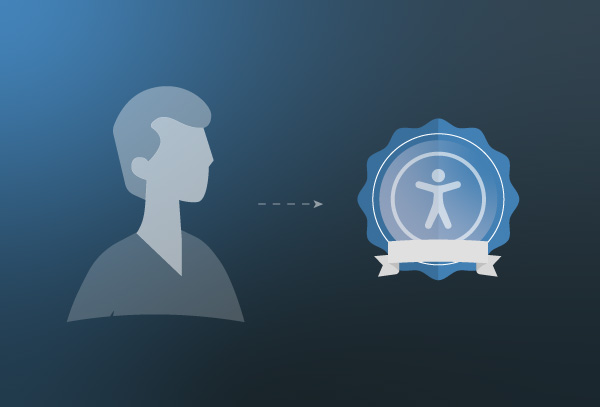Accessibility, it’s crucial for eLearning and ensuring that learners with disabilities can access and benefit from online content. And although meeting the guidelines for online accessibility may seem like an acceptable effort, it may not be enough for the future of our learners and employees. Simply focusing on accessibility compliance can limit the effectiveness of your learning experience, especially for those with disabilities. So, we encourage you to create eLearning that goes beyond compliance, and its much simpler than it may seem.

We all know that accessibility is about opening up opportunities for those with differing abilities that were previously inaccessible. That by promoting accessibility in the class room organisations were able to follow and fully comply with its standards to avoid any legal issues. But, what happens when we do more, offer extra accessibility, so that all our learners are on an even playing field?
Let’s begin by looking at the limitations of focusing on compliance. While meeting these standards is important, it doesn’t not necessarily mean that these learners have the best learning experience, it could be sound at best. For example, providing alt-text for images may meet accessibility requirements but in most cases does not fully convey the intended message to learners. After all one image is worth a thousand words.
So, what can learning designers do to ensure all learners have equitable learning experience? By considering all learners needs and not just those with disabilities, eLearning courses can be much more effective and impactful. Understand that all learners have needs, not just those with disabilities and work to find an experience that will optimised all learning experiences. Try considering the following strategies when creating eLearning:
Clear Navigation: Ensure the course is easy to navigate, with clear and concise instructions. Remove any unnecessary buttons, and transitional effects. Not only will you end up with a much more appealing and straightforward course, but for those with sensory disabilities, you are able to create an experience that they will be comfortable with.
Concise Content: Keep it to the point, avoid large chunks of text or unnecessary detail. Ensure examples make sense and can be applied to the topic of discussion. Avoid putting in underlying messages that may confuse learners.
Engage Multimedia: Multimedia is your best friend when creating eLearning, use videos, images, interactive elements, that engage and reinforce what has been learnt. Be sure to include alt-text, alt-formats, diverse interaction option, and other means of accessibility options that allow all learners to access the experience.
Take your learning to the next level with innovative learning approach such as:
Gamification: This doesn’t mean adding a literal game into the learning that will distract the learner instead try adding leaderboards or badges to motivate your learners. By making the learning more engaging, you’re likely to see motivation and performance rates rise.
Social Learning: Collaboration fosters a sense of community, encourage collaboration through discussion boards, video responses, and commenting sections. Here, learners are able to interact with one like that of a classroom setting, all in the comfort of their own home.
Personalisation: Tailor your learning experiences. Understand that some learners have different needs that may fall outside of compliance. Find out their preferences and provide them with feedback and recommendations throughout. Know which learners require more support and others that may need more complex learning to fully engage them.
Each of your learners is different, and understanding this will help you create better learning. Using the above information you may find that a learner has a cognitive difficulty. You can engage this learner with gamification elements that catch their attention and support them in completing the learning. Further, those with social disabilities can interact with their peers through social learning. Finding what works best is no simple task, but once you have, you’ll be one step closer to creating an inclusive and diverse learning industry.
Evaluating the success of your chosen course material is a great strategy in improving accessibility and inclusivity. Ongoing evaluation, beyond that of the actual creation of the course will allow you to identify areas for improvement, perhaps you need to clarify a talking point or reiterate a certain concept, evaluating your learning will reveal what it is you need to do. Further, incorporate inclusive design throughout the creation process, don’t think that you can go back at the end and add this in rather create with inclusivity in mind as you’ll find that designing for diverse user needs and perspectives, will give all learners the opportunity to participate and engage with the learning.
Creating eLearning is more than compliance, its about seeing a need and tending to it, giving the best possible experience to these learners so that everyone, regardless of their ability has an opportunity to better themselves. To learn something. To gain a new skill. To be a part of a community. Or to become employable.


